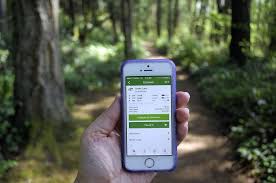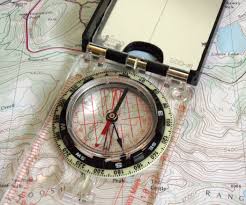When I heard someone talk about geocaching I thought, “Hmm, that like some new world money or something?” So I asked. And nope it’s not. Its actually something more valuable or at least could be in a survival situation.
Geocaching is well … plain and simple, a glorified game of hide-and-seek but on a grander scale. A much, much grander scale.
Unlike hide-and-seek of days gone by - you know you hide and someone(s) seeks to find you - there is a technical spin to it. In geocaching you use a GPS or a Smartphone to find some thing in a hidy-hole.
The premise is kinda the same though. Instead of a person hiding, you hide a  container in a hidy-hole called caches (pronounced cash-es). These caches can be things like cans or containers; most likely waterproof, that usually contains a log book where data is entered as to when it was found or directs you to a website to input the information.
container in a hidy-hole called caches (pronounced cash-es). These caches can be things like cans or containers; most likely waterproof, that usually contains a log book where data is entered as to when it was found or directs you to a website to input the information.
To really spice up geocaching just a notch, there is an item called “Travel Bug®” – it’s not what I thought either. They are like dog tags used by the military but are trackable via a website and assigned number where its movements are logged. Huh? Well you attach the tag to an item and the item is then transported from person to person with a desired goal in mind - like say – go particular distances or a specific place.
This intrigued me. From what I’ve read, this “hide-and-seek” practice is nothing new – well with the exception of the technology part. Seems way back when there was a method of caching where a person would put clues and references to landmarks in stories as to where the hidden cache could be found. Like treasure hunting.
Well, this got me to thinking. This would be a creative way to map your survival caches (you do have survival caches don’t you?) - listen up girlies this should already have been a consideration.
Survival caches are needed as a back-up – you know plan B contingency? Putting your eggs in one basket so to speak is not a good thing. You need to have your supplies spread out in different locations. Heaven forbid after a disaster, you were overrun by “bad-guys” who take over your home and all your supplies in it and throw you to the curb. You’re now left out in the cold (so-to-speak) with nothing but the shirt on your back. But ... if you had hidden caches, you could make your way to them (or to it) and even though you are starting over you are not without food, shelter and supplies. Makes sense huh?
By getting on board the “geocaching” train you can actually begin to learn how to be creative with your survival caches. I mean that’s the idea - placing your things where others can’t find them easily. Just like with the game of hide-and-seek, difficulty IS the key. What challenge is there to something easy right?
To give an example of the first documented geocaching - from what I understand, it was nothing more than a black bucket buried in the ground that contained software, videos, books, food, money and a slingshot. Now, not sure about you, but that sounds pretty survivalish to me. Just sayin.
 Once you have had a little experience with geocaching, as a survival training practice; and because there may not be satellites or power for a GPS type device depending on the disaster, get yourself familiar with that compass in your emergency bag (if you haven’t already).
Once you have had a little experience with geocaching, as a survival training practice; and because there may not be satellites or power for a GPS type device depending on the disaster, get yourself familiar with that compass in your emergency bag (if you haven’t already).
Note: don’t just buy things on your survival supply list and then put them way. Learn how to use all your supplies. Learning at the time of need is not a good practice and could actually cause more harm than good.
Get with someone of like-mind and (with compass in hand) take turns hiding (making sure to write down the coordinates) and finding caches.
Start easy, like your own yard, this way you won’t get too frustrated at first. Remember learning a new device takes time. Once you have learned how to read coordinates well branch out into areas farther and farther way from your home. Ultimately, this will help you judge distances and give you a good idea of where some great hiding places would be. Here's one that we built for National Geographic Channel's "Doomsday Preppers"
Another good thing to do would be to walk to the caches - another eye opener – instead of driving. Putting something so far away that you can’t walk to it in a reasonable amount of time is kinda self-defeating. We’re takin survival here remember?
So there you have it geocaching.
Soon you’ll be saying “gee-I’m-caching”. Just sayin'.
- Survivor Jane

Thank you in advance for sharing Survivor Jane with your friends!
If you have any questions, or would like to see a specific article addressing survival preparedness for women on SurvivorJane.com click here
Or contact Survivor Jane at editorial@survivorjane.com
Follow me on Twitter @SurvivorJane and usethe hashtag #PrepperTalk where you will find the Largest Prepper Community on Twitter!

